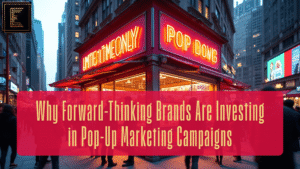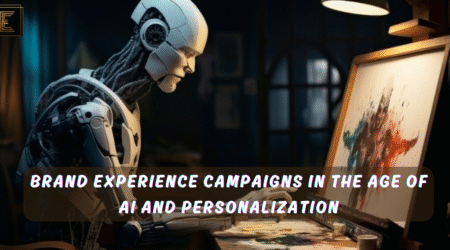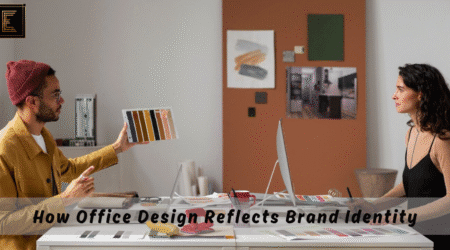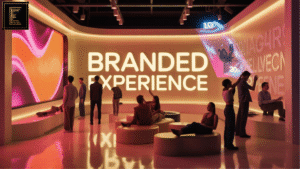In today’s fast-evolving retail landscape, brands are constantly looking for innovative ways to engage customers. One of the most effective strategies is the rise of clothing brand pop-up shops—temporary retail spaces designed to offer exclusive shopping experiences.
Unlike traditional stores, pop-ups are not just about selling products; they create immersive brand experiences that captivate customers. The key to a successful pop-up shop is experiential design, which transforms ordinary spaces into engaging, multi-sensory environments that leave lasting impressions.
In this blog, we will explore:
- The rise of clothing brand pop-up shops
- What experiential design means in retail
- How experiential design enhances pop-up shops
- Key strategies to implement experiential elements
- The future of pop-up shops in fashion retail
Let’s dive in,
1. The Rise of Clothing Brand Pop-Up Shops
Pop-up shops have become a game-changer in the fashion industry, offering a dynamic way to connect with customers and build brand awareness. These temporary retail spaces create a sense of urgency and exclusivity, driving both foot traffic and sales.
Why Clothing Brand Pop-Up Shops Are Growing in Popularity
| Benefit | Description |
| Limited-Time Appeal | The temporary nature creates urgency, making customers more likely to visit. |
| Cost-Effective | Pop-ups require lower investment compared to permanent retail spaces. |
| Product Testing | Brands can experiment with new products, pricing, and locations. |
| Brand Storytelling | A chance to create unique, immersive brand narratives. |
| Community Engagement | Direct interaction with customers builds stronger relationships. |
Examples of Successful Clothing Brand Pop-Up Shops
- Nike’s Innovation House: An interactive experience where customers could test new shoe technology.
- Gucci’s Pin Shops: Digital and physical hybrid pop-ups inspired by social media.
- Adidas’ Futurecraft Lab: A limited-time shop featuring 3D-printed sneakers.
Brands of all sizes—from global fashion houses to independent designers—are now leveraging clothing brand pop-up shops to drive engagement and sales.
2. What is Experiential Design in Retail?
Experiential design goes beyond traditional retail by focusing on engagement, interaction, and storytelling. Instead of simply showcasing products, it creates an emotional connection between the customer and the brand.
Key Elements of Experiential Design
- Multi-Sensory Engagement: Incorporating visual, auditory, tactile, and even olfactory elements to enhance the experience.
- Interactive Elements: AR mirrors, AI-powered recommendations, and digital displays.
- Brand Storytelling: Designing the space to reflect the brand’s values and aesthetics.
- Personalization: Tailoring shopping experiences based on customer preferences.
This approach transforms clothing brand pop-up shops from temporary retail spaces into unforgettable experiences.
3. How Experiential Design Enhances Clothing Brand Pop-Up Shops
To stand out in today’s competitive market, pop-ups must go beyond selling products—they must offer an experience. Let’s explore how experiential design elevates clothing brand pop-up shops:
1. Immersive Store Layouts
- Thoughtfully designed spaces guide customers through a journey.
- Unique themes (e.g., futuristic, vintage, seasonal) enhance the brand experience.
- Open, Instagrammable layouts encourage social sharing.
2. Personalized Shopping Experiences
- AI-powered styling assistants recommend outfits.
- Virtual fitting rooms let customers “try on” clothes digitally.
- QR codes provide access to behind-the-scenes brand stories.
3. Social Media Integration
- Instagrammable moments: Neon walls, artistic displays, and mirrors with quotes.
- Live streaming & influencer events: Maximizing online engagement.
- Hashtag campaigns: Encouraging user-generated content.
4. Multi-Sensory Engagement
- Music & Soundscapes: Set the mood for a premium experience.
- Signature Scents: Creating a distinctive brand memory.
- Interactive Materials: Textured fabrics, digital touchpoints, and 3D-printed elements.
Experiential design boosts customer engagement, encourages repeat visits, and increases brand recall.
4. Key Strategies for Implementing Experiential Design in Pop-Up Shops
If you’re planning to launch a clothing brand pop-up shop, here are essential strategies to make it stand out:
✔️ Align with Your Brand Identity
- Design the store based on your brand’s aesthetics and values.
- Ensure consistency across in-store and online experiences.
✔️ Incorporate Interactive Elements
- DIY customization stations where customers can personalize clothes.
- Live fashion shows, styling workshops, and influencer collaborations.
- Augmented Reality (AR) dressing rooms for virtual try-ons.
✔️ Offer Exclusive, Limited-Edition Products
- Scarcity drives demand! Pop-up-only items create a sense of urgency.
- Collaborate with artists or designers to launch special editions.
✔️ Leverage Local Partnerships
- Work with local artists, musicians, and businesses to attract a wider audience.
- Create experiences tailored to the local culture and fashion scene.
✔️ Use Data to Optimize Experiences
- Track foot traffic, engagement, and sales to refine future pop-ups.
- Conduct interactive surveys to gather customer feedback.
A well-planned pop-up shop isn’t just a store—it’s a brand-building experience.
5. The Future of Clothing Brand Pop-Up Shops with Experiential Design
The future of retail is experiential, and pop-ups are at the forefront of this transformation. Here’s what’s next:
Emerging Trends in Pop-Up Retail
| Trend | Impact on Pop-Up Shops |
| AI-Powered Personalization | Data-driven recommendations and personalized shopping. |
| Augmented Reality (AR) Shopping | Virtual try-ons and immersive product interactions. |
| Sustainability-Focused Pop-Ups | Eco-friendly materials and zero-waste store designs. |
| Metaverse Integration | Blending digital and physical retail experiences. |
Brands that embrace these trends will redefine the future of clothing brand pop-up shops and create experiences customers will never forget.
Conclusion
Experiential design is revolutionizing clothing brand pop-up shops, turning them into immersive, multi-sensory experiences rather than just temporary stores.
Key Takeaways:
- Experiential pop-ups create emotional connections with customers.
- Technology & personalization enhance engagement.
- Social media-friendly designs drive online visibility.
- Future pop-ups will be more interactive, digital, and sustainable.
By leveraging experiential design, brands can go beyond the storefront and create unforgettable moments that turn customers into loyal fans.
FAQs
1. What makes a clothing brand pop-up shop successful?
A strong theme, immersive experiences, social media integration, and exclusive products make pop-ups successful.
2. How does experiential design impact customer engagement?
It creates emotional connections through interactive, multi-sensory elements, increasing customer satisfaction and retention.
3. Why are pop-up shops popular among fashion brands?
They offer cost-effective, high-impact retail solutions with exclusivity and market-testing opportunities.
4. What role does technology play in pop-up shops?
AR mirrors, AI-powered styling, and digital checkout systems enhance the shopping experience.
5. How can small brands benefit from pop-up shops?
Pop-ups help small brands gain visibility, build relationships with customers, and test new products in real-time.







